Caspian Tern, Reuzenstern, Raubseeschwalbe, Gaivinha-de-bico-vermelha, Pagaza Piquirroja
Spotted in the Alentejo region of Portugal. Caspian Tern sound
The Caspian Tern (Hydroprogne caspia, formerly Sterna caspia; syn. Hydroprogne tschegrava, Helopus caspius) is a species of tern, with a subcosmopolitan but scattered distribution. Despite its extensive range, it is monotypic of its genus, and has no subspecies accepted either. In New Zealand it is also known by the Maori name Taranui.
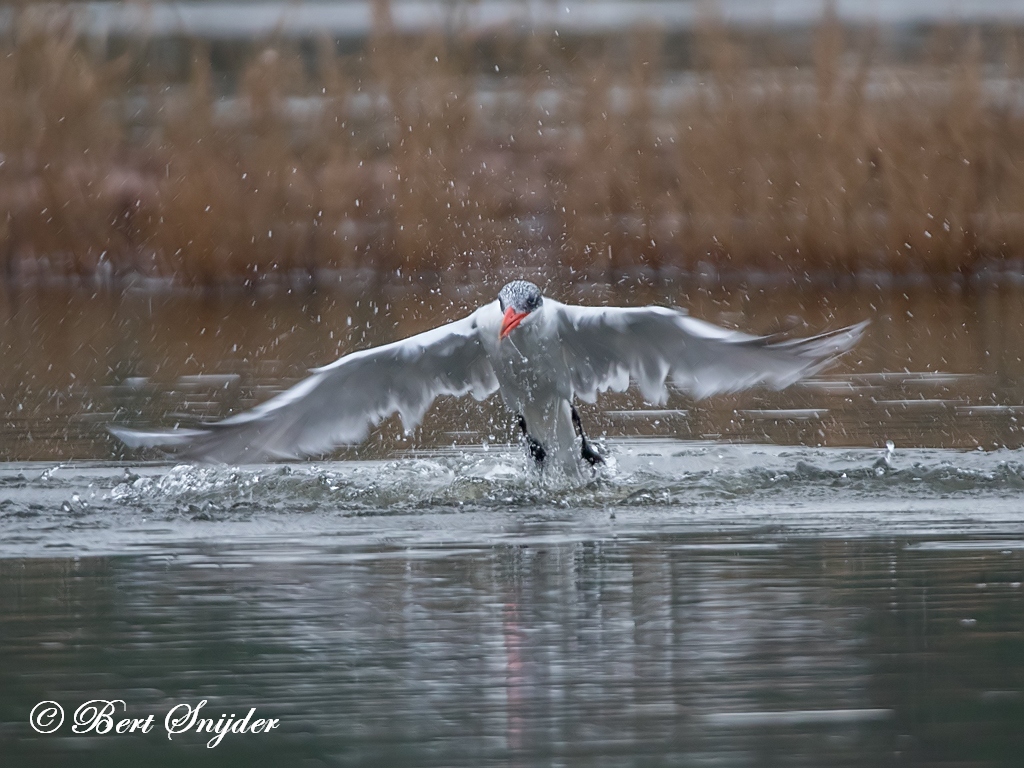
More photos at the bottom of this page:
It is the world’s largest tern with a length of 48–60 cm (19–24 in), a wingspan of 127–145 cm (50–57 in) and a weight of 530–782 g (1.2-1.8 lb). Adult birds have black legs, and a long thick red-orange bill with a small black tip. They have a white head with a black cap and white neck, belly and tail. The upper wings and back are pale grey; the underwings are pale with dark primary feathers. In flight, the tail is less forked than other terns and wing tips black on the underside. In winter, the black cap is still present (unlike many other terns), but with some white streaking on the forehead. The call is a loud heron-like croak.
Their breeding habitat is large lakes and ocean coasts in North America (including the Great Lakes), and locally in Europe (mainly around the Baltic Sea and Black Sea), Asia, Africa, and Australasia (Australia and New Zealand). North American birds migrate to southern coasts, the West Indies and northernmost South America. European and Asian birds spend the non-breeding season in the Old World tropics. African and Australasian birds are resident or disperse over short distances.
The global population is about 50,000 pairs; numbers in most regions are stable, but the Baltic Sea population (1,400–1,475 pairs in the early 1990s) is declining and of conservation concern.
The Caspian Tern is one of the species to which the Agreement on the Conservation of African-Eurasian Migratory Waterbirds (AEWA) applies.
They feed mainly on fish, which they dive for, hovering high over the water and then plunging. They also occasionally eat large insects, the young and eggs of other birds and rodents. They may fly up to 60 km from the breeding colony to catch fish; it often fishes on freshwater lakes as well as at sea.
Breeding is in spring and summer, with one to three pale blue green eggs, with heavy brown spotting, being laid. They nest either together in colonies, or singly in mixed colonies of other tern and gull species. The nest is on the ground among gravel and sand, or sometimes on vegetation; incubation lasts for 26–28 days. The chicks are variable in plumage pattern, from pale creamy to darker grey-brown; this variation assists adults in recognizing their own chicks when returning to the colony from feeding trips. Fledging occurs after 35–45 days.

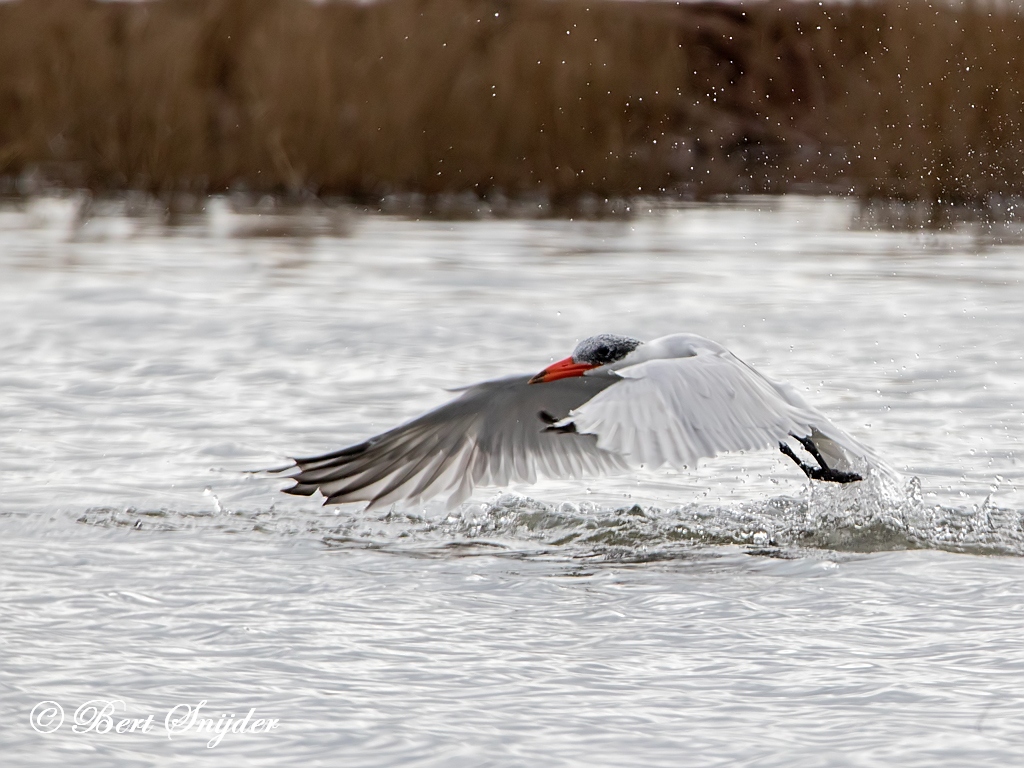

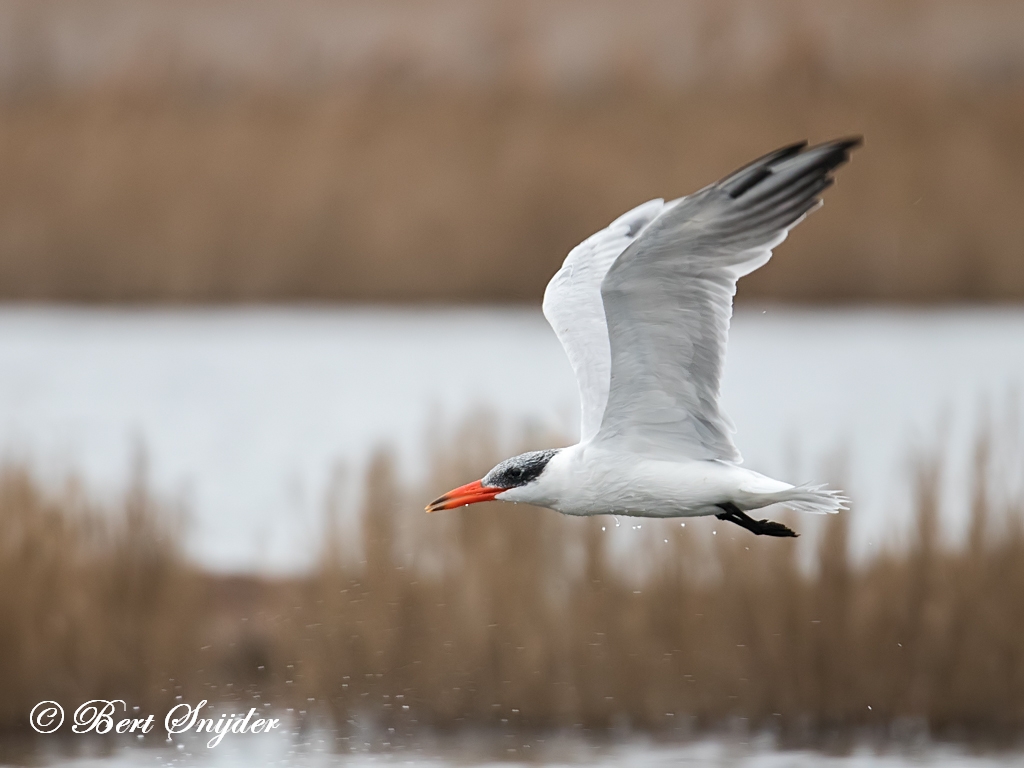
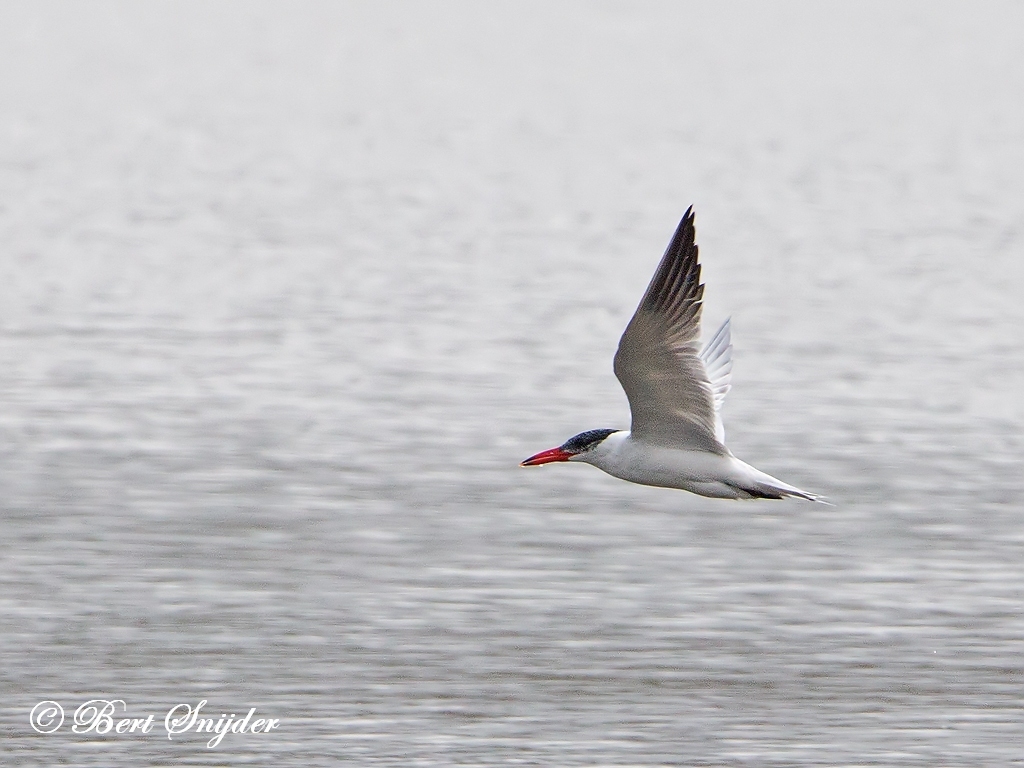

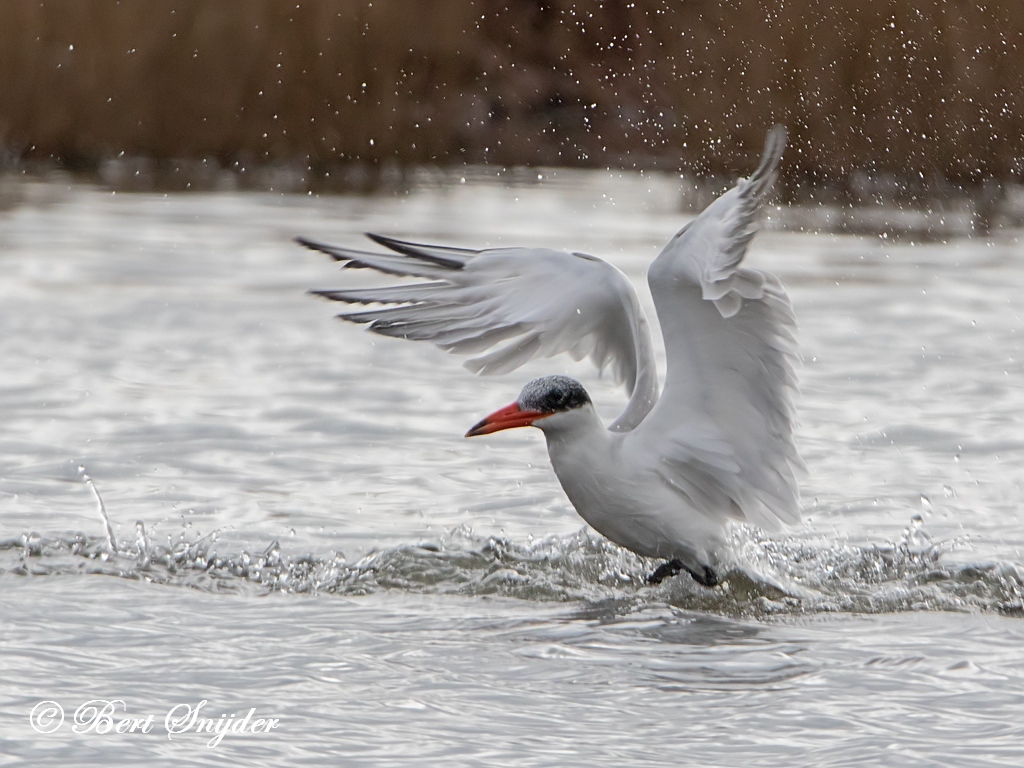
Other synonyms:
Afrikaans: Reuseseeswael , Reusesterretjie
Asturian: Chirri Picarroxa, Picarroxa
Breton: Ar skrav-Kaspia
Catalan: Fumarell d’ala blanca, Llambritja de bec vermell, Xatrac gros
Catalan (Balears): Llambritja de bec vermell
Valencian: Fumarell d’ala blanca
Czech: Rybák velkozobý
Welsh: Morwennol fwyaf
Danish: Rovterne
German: Raubseeschwalbe, Raub-Seeschwalbe, Riesenseeschwalbe
Maldivian: Miyaremu Dhooni
English: Caspian Tern, Taranui
Spanish: Charrán Caspia, Gaviota Caspia, Gaviota golondrina caspiana, Gaviota Picorojo, Gaviota Real Grande, Gaviota Real?, Gaviotín de Pico Rojo, Gaviotín Piquirrojo, Golondrina-marina Caspica, Pagaza Mayor, Pagaza Piquirroja, Pagaza Piquirrojo
Spanish (Colombia): Gaviotín Piquirrojo
Spanish (Costa Rica): Pagaza Mayor
Spanish (Cuba): Gaviota Real Grande
Spanish (Dominican Rep.): Charrán Piquiroja, Gaviota Picorojo, Gaviota Real
Spanish (Honduras): Gaviota golondrina caspiana
Spanish (Mexico): charrán caspia, Golondrina-marina Caspica
Spanish (Nicaragua): Pagaza Piquirroja
Spanish (Venezuela): Gaviota Cáspica
Estonian: räusk, Räusktiir, räusktiir (räusk), Räusktiir e. räusk, Räusktiir, räusk
Basque: Txenada mokogorria, Xatrac gros
Finnish: Räyska, Räyskä
Faroese: Brituterna
French: Sterne caspienne, Sterne tchégavra
Irish: Geabhróg Chaispeach
Galician: Carrán do Caspio, Xatrac gros
Haitian Creole French: Gwo Mòv bèk jòn
Croatian: Velika ?igra
Hungarian: Lócsér
Indonesian: Daralaut Caspia
Icelandic: Ránþerna, Stormsvala
Italian: Sterna maggiore, Uccello delle tempeste
Japanese: oniajisashi, Oni-ajisashi
Latin: Hydroprogne caspia, Hydroprogne tschegrava, Sterna caspia, Sterna caspica, Sterna tschegrava
Lithuanian: Plešrioji žuvedra
Malagasy: Samby, Trobaky, Varevaka
Maori: taranui, Tara-nui
Malay: Camar Caspian
Dutch: Reuzenstern
Norwegian: Rovterne
Polish: Rybitwa krótkodzioba
Portuguese: andorinha do mar grande, Andorinha-do-mar-grande, Gaivina-de-bico-vermelho, Gaivina-de-bisco-vermelho
Romansh: Pestgarel caspic
Russian: Chegrava
Slovenian: kaspijska cigra
Albanian: Dallëndyshe deti e madhe
Serbian: velika cigra
Swedish: Skräntärna
Swahili: Shakwe Domo-kubwa
Turkish: Büyük Sumru, Hazar sumrusu
Travel Birdwatching Holiday Alentejo, Vacation Portugal for birders to see birds on your trip.